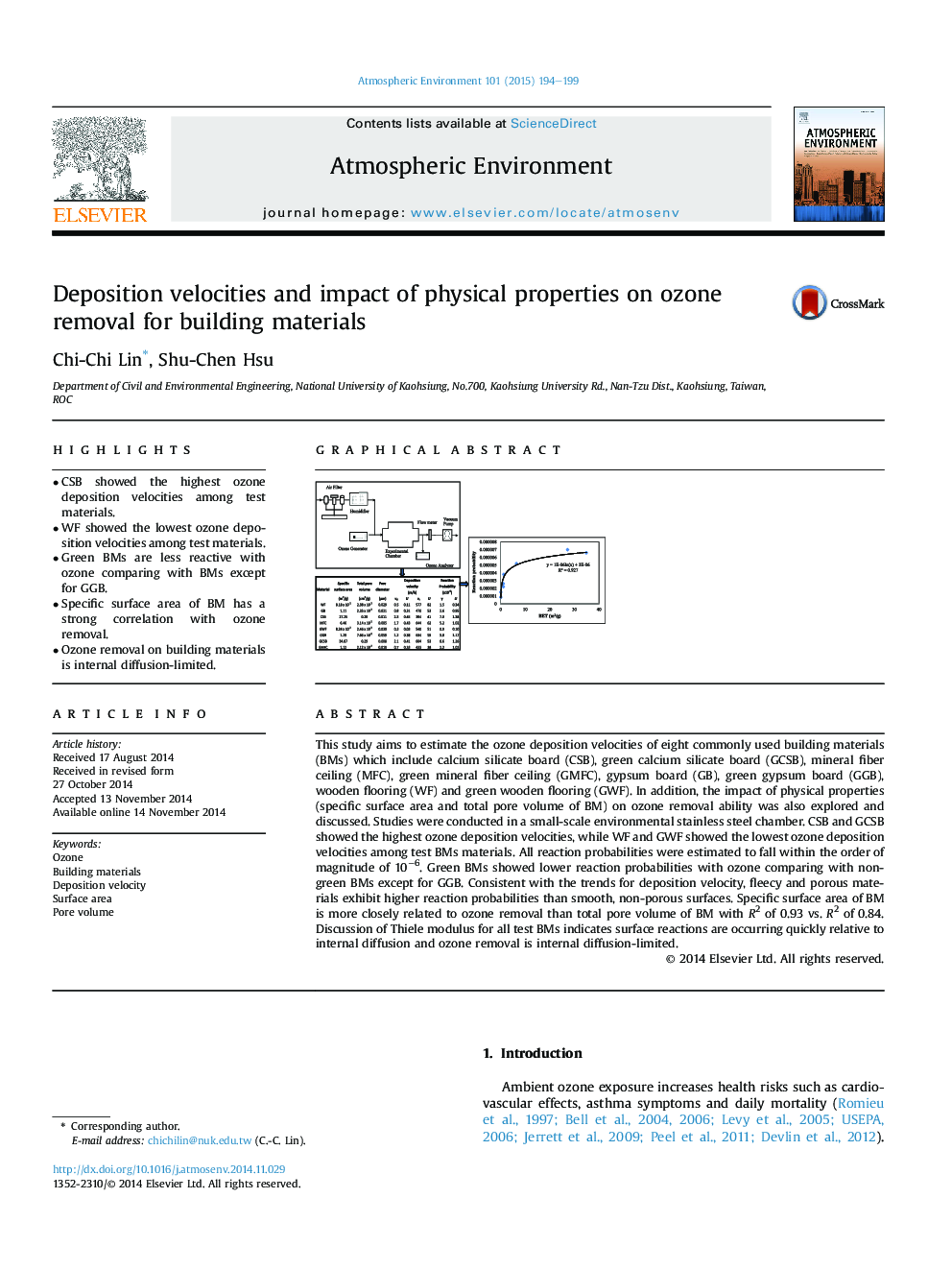| Article ID | Journal | Published Year | Pages | File Type |
|---|---|---|---|---|
| 6338617 | Atmospheric Environment | 2015 | 6 Pages |
â¢CSB showed the highest ozone deposition velocities among test materials.â¢WF showed the lowest ozone deposition velocities among test materials.â¢Green BMs are less reactive with ozone comparing with BMs except for GGB.â¢Specific surface area of BM has a strong correlation with ozone removal.â¢Ozone removal on building materials is internal diffusion-limited.
This study aims to estimate the ozone deposition velocities of eight commonly used building materials (BMs) which include calcium silicate board (CSB), green calcium silicate board (GCSB), mineral fiber ceiling (MFC), green mineral fiber ceiling (GMFC), gypsum board (GB), green gypsum board (GGB), wooden flooring (WF) and green wooden flooring (GWF). In addition, the impact of physical properties (specific surface area and total pore volume of BM) on ozone removal ability was also explored and discussed. Studies were conducted in a small-scale environmental stainless steel chamber. CSB and GCSB showed the highest ozone deposition velocities, while WF and GWF showed the lowest ozone deposition velocities among test BMs materials. All reaction probabilities were estimated to fall within the order of magnitude of 10â6. Green BMs showed lower reaction probabilities with ozone comparing with non-green BMs except for GGB. Consistent with the trends for deposition velocity, fleecy and porous materials exhibit higher reaction probabilities than smooth, non-porous surfaces. Specific surface area of BM is more closely related to ozone removal than total pore volume of BM with R2 of 0.93 vs. R2 of 0.84. Discussion of Thiele modulus for all test BMs indicates surface reactions are occurring quickly relative to internal diffusion and ozone removal is internal diffusion-limited.
Graphical abstractDownload high-res image (170KB)Download full-size image
